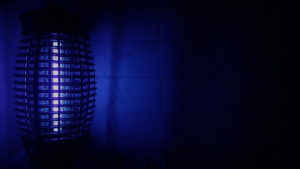
Effective pest management has always been a challenge for commercial establishments. The presence of insects not only spoils the environment of a workplace, certain businesses also require a pest-free premise for their regular operations. In the recent years, insect light traps have emerged as a popular alternative, especially for eliminating the flying insects.
Before discussing ahead, let us discuss what an insect light trap is. These devices utilise a unique technology to effectively and hygienically capture flying insects. Unlike the conventional electric insect killers, these devices make use of UV light technology to attract the insects and trap them on a concealed glue board. The functioning of these devices is based on the well known fact that insects are attracted to light.
Components of Flying Insect Traps:
Though there can be certain variations across manufacturers of different types of trap, an insect light trap, in general, is comprised of the following components.
- Housing: Most of the traps are a light source placed within a cage-like structure.
- Light: A source of ultraviolet (UV) light, or black light is placed in the housing and the flying insects are attracted towards the emitted light.
- Attractant: After the insects are lured closer by the UV-A light source, a glueboard is recommended to be used to trap them, especially if food is present or hygiene is important. In some cases, certain pheromones or smells are used to attract the insects.
- Trap: Some insect light traps eliminate the flying objects by electrocuting them. In such cases, a pan placed at the bottom is used to catch them. On the other hand, in case of glue boards, the insects are trapped by the adhesive. Electrocution models are NOT recommended as the insects fragment on contact and can contaminate food and sterile areas.
Placing the Trap:
In order to ensure maximum efficiency for your insect light trap, their strategic placement around the property is extremely important. Mentioned below are some simple guidelines for placing insect light traps.
- Placing an insect light trap near the entrance of a room will ensure that the device is able to trap the maximum number if insects before they can enter the room.
- Target the areas that are known have high insect population.
- Most of the flying insects prefer living in warmer areas. Therefore, it makes sense to place the traps in areas with temperatures around 25-30 degrees centigrade.
How do Insect Light Traps Work
Before discussing how insect light traps work, it is important to understand why insects are attracted to light sources. Interestingly, there are a number of theories offering a possible explanation of this insect behavior.
Some insects are attracted to light because they consider this to be a safety signal. Another popular theory suggests that insects use light sources as a navigational aid. This method, however, only works as long as the light source is constant.
It is important to note that all insects are not attracted to light. This behavioral difference can be explained by a phenomenon known as phototaxis. Certain insects (cockroaches and earthworms) have a negative phototaxis, and are repelled by light sources. On the other hand, insects such as flies and moths are naturally attracted to light because they have positive phototaxis.
Moreover, though human beings can’t see UV light, a number of flying insects can see and get readily attracted by UV light. This is the reason why UV lights are extremely preferred for insect light traps.
Some Expert Tips for Using Insect Light Traps:
If you have already decided to install an insect light trap, here are some additional recommendations for you.
- Avoid installing an insect light trap near water or damp locations, competing light sources, and excessive heat sources.
- Never use electronic grid traps in food areas. They can cause contamination and disease of flying insect parts as the insects disintegrate on contact.
- Always use glueboard models where food is present or hygiene is important.
- Place the insect light traps traps in a manner so that the insects are not drawn near or across any process, product, or related materials.
- In case of food processing industries, the insect light traps should be placed in a way that intercepts the insects before they enter the processing areas.
- The unit should be placed carefully to ensure that it can be easily accessed for inspection and periodic service of bulbs and glue boards.
